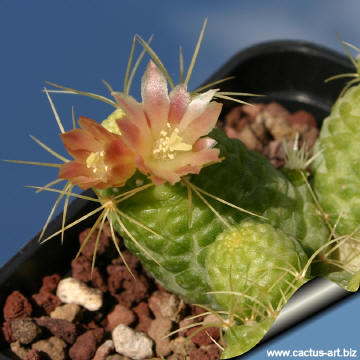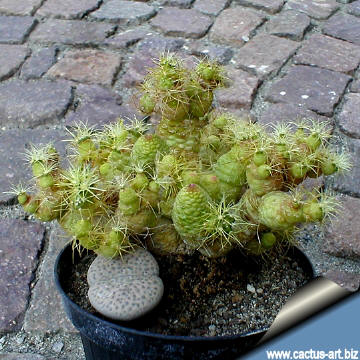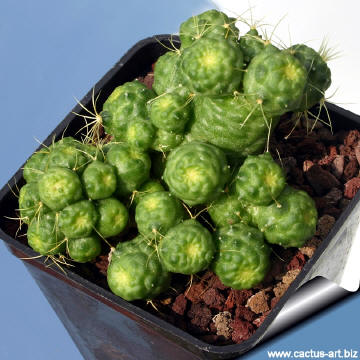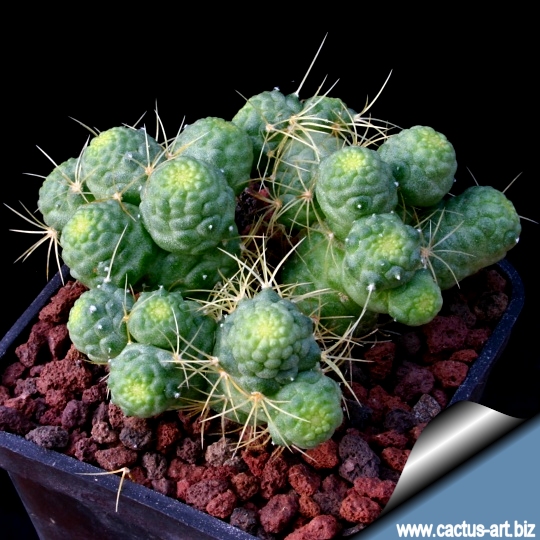|
|
|

Mammillaria elongata forma mostruosa
Not
easily flowered, this slow growing oddity is rarely seen in
cultivation.
|
 |
 |
|
. |
 |
 |
|


Advertising
|
|
|
|
|
|
|
Family:
Cactaceae (Cactus
Family)
Scientific name:
Mammillaria elongata DC.
Rev. Fam. Cact. in Mém. Mus. Hist. Nat. Paris 17: 109
(1828) forma mostruosa
Origin:
Garden origin (Nursery
produced cultivar)
Conservation status: Listed in
CITES appendix 2.
Common Names include: Monstrous Lady
Fingers, Monstrous Golden Star Cactus
Synonyms:
- Neomammillaria
elongata (DC.) Britton & Rose
Cact. 4:134. 1923
- Cactus elongatus
- Leptocladodia elongata
- Krainzia elongata
- Chilita elongata
|
Description: This monstrous form is
characterised by slow growing and almost spineless stems. Only a few
spines are produced at the base of new growing stems. It will form with
time an irregular clump of stems.
Stems: Elongated, cylindrical, finger-like, 1 - 3 cm in diameter
(but usually shorter than in the standard form).
Roots: Fibrose.
Tubercle: Tubercles flattish, rounded irregularly, arranged in
a
spiral. The axil is naked.
Radial spine: Only in the the basal portion of the stems,
variable in number, up to 14 arranged as a star, golden yellow,
slender, needle-like, up to12 mm long.
Central spine: Usually absent,.
Flower: Flesh coloured, flushed pink, up to 10 mm in length and in
diameter.
Blooming season (Europe): Spring.
Fruit: Unknown.
|
|
|
|

It is almost spineless with only a few yellow
spines produced at the base of new growing stems.
Cultivation:
This rare cultivar is
slow growing and tricky to cultivate.
It will form quite
large clumps
of
several offsets, if given time and grown properly. Water regularly from
spring through fall, but do not over-water (rot prone).
Let soil become
moderately dry between thorough waterings.
In winter, keep dry or water
only enough to keep the plants from shriveling. Use pot with good
drainage and a very porous potting media.
Newly
potted plants should not be fertilized for a year; established plants
should be fertilized once each spring
with a high potassium
fertilizer.
It is quite frost resistant if kept dry, hardy as low as -4°
C. Outside full sun
or afternoon shade, inside needs bright light, and some direct sun, but
high levels of light will encourage tight growth and flowering.
Propagation:
This species
produce clumps of young plants at the base of the main stem, these can
be removed at any time of the year.
It can also be grown from
seed.
Photo of conspecific taxa, varieties, forms and
cultivars of Mammillaria elongata.
|
|